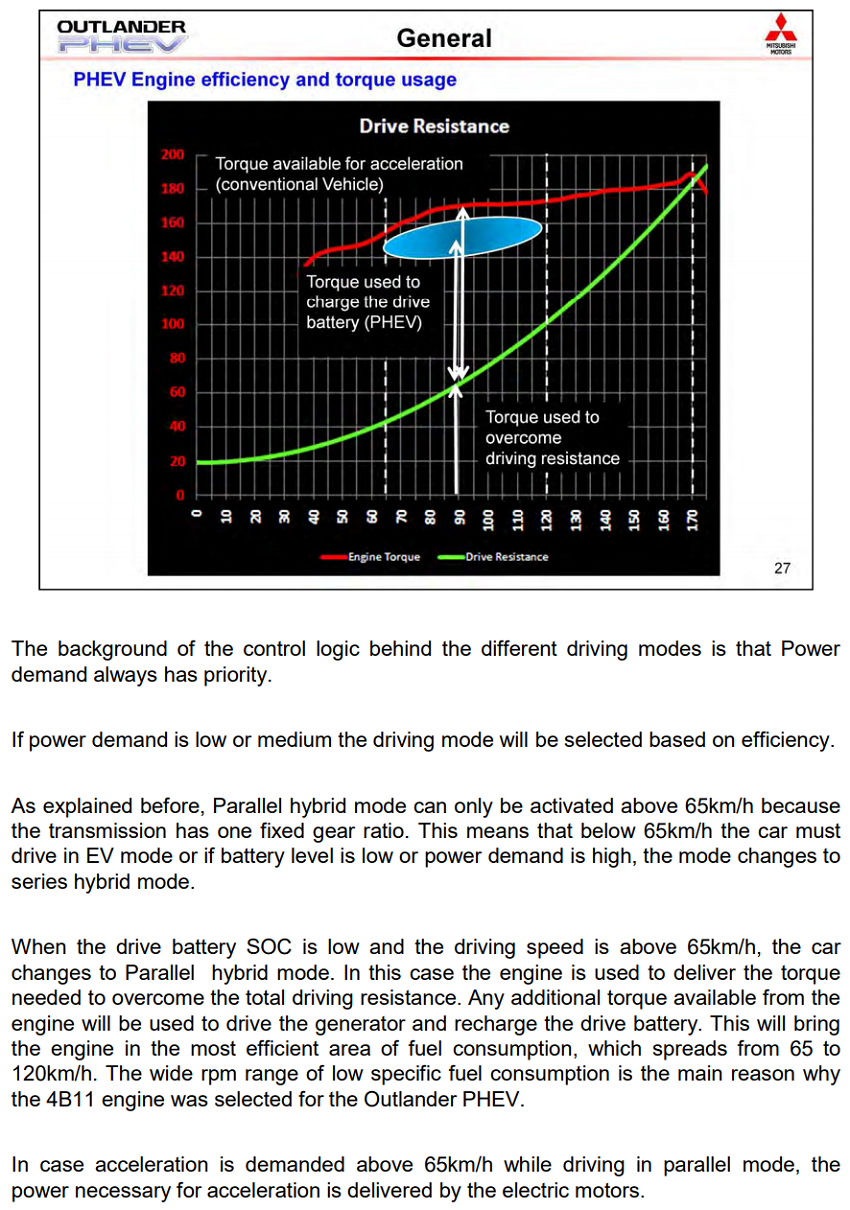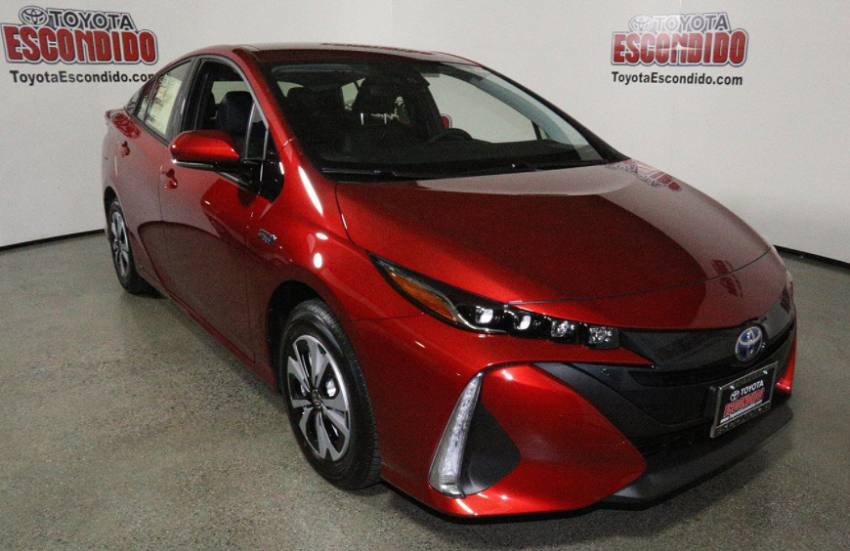generaltso
Well-known member
Harald said:Cool gimmick! I want to have that in mine too...generaltso said:...the Land Departure Warning ...
Ha! Thanks, I fixed it. Though it certainly would be good to have a warning if we were departing with land!

Harald said:Cool gimmick! I want to have that in mine too...generaltso said:...the Land Departure Warning ...
You won't be short of acceleration as in it's formally flat state the car will dip into its power reserve to sustain short power demands like accelerating.maby said:MikkB said:...
I think this can be achieved with the Save button.
You certainly can to an extent, but the level of charge does still drift down even with the Save button selected. I also inevitably end up forgetting to press Save from time to time and finding myself a long way from home with a flat battery and short of acceleration unless I select "Charge".
jaapv said:You won't be short of acceleration as in it's formally flat state the car will dip into its power reserve to sustain short power demands like accelerating.maby said:MikkB said:...
I think this can be achieved with the Save button.
You certainly can to an extent, but the level of charge does still drift down even with the Save button selected. I also inevitably end up forgetting to press Save from time to time and finding myself a long way from home with a flat battery and short of acceleration unless I select "Charge".
What you say is correct jaapv, but only for a very short time. The long journey that I undertake has fast but undulating roads and I have found that if I let the car manage the drive battery at a single bar, then I run out of steam very quickly and on some of the steeper inclines the car doesn't accelerate as well as it normally does, by using the save button as I mentioned at the start of this thread it alleviates this problem (for me anyway) and gives a much more relaxed journey.jaapv said:You won't be short of acceleration as in it's formally flat state the car will dip into its power reserve to sustain short power demands like accelerating.maby said:MikkB said:...
I think this can be achieved with the Save button.
You certainly can to an extent, but the level of charge does still drift down even with the Save button selected. I also inevitably end up forgetting to press Save from time to time and finding myself a long way from home with a flat battery and short of acceleration unless I select "Charge".
Sumpy said:...
What you say is correct jaapv, but only for a very short time. The long journey that I undertake has fast but undulating roads and I have found that if I let the car manage the drive battery at a single bar, then I run out of steam very quickly and on some of the steeper inclines the car doesn't accelerate as well as it normally does, by using the save button as I mentioned at the start of this thread it alleviates this problem (for me anyway) and gives a much more relaxed journey.
I don't think there is a "one size fits all" solution to driving the PHEV, you just have to experiment and find what works best for you.
I hear you, but I only managed to do this once - driving on a hilly Autobahn @ 160 with a full load and a skibox on a very long uphill bit - and even then it only displayed a warning message and did not actually lose power, as I reduced my speed a bit.Sumpy said:What you say is correct jaapv, but only for a very short time. The long journey that I undertake has fast but undulating roads and I have found that if I let the car manage the drive battery at a single bar, then I run out of steam very quickly and on some of the steeper inclines the car doesn't accelerate as well as it normally does, by using the save button as I mentioned at the start of this thread it alleviates this problem (for me anyway) and gives a much more relaxed journey.jaapv said:You won't be short of acceleration as in it's formally flat state the car will dip into its power reserve to sustain short power demands like accelerating.maby said:...
I think this can be achieved with the Save button.
You certainly can to an extent, but the level of charge does still drift down even with the Save button selected. I also inevitably end up forgetting to press Save from time to time and finding myself a long way from home with a flat battery and short of acceleration unless I select "Charge".
I don't think there is a "one size fits all" solution to driving the PHEV, you just have to experiment and find what works best for you.
Trades46 said:I lurked in the Chevrolet Volt (or Opel Ampera-E to you Europeans) forums for a long time before coming up with this.
The Outlander PHEV operates almost identically to the Volt mk1, except it is an SUV & has a rear-mounted motor generator unit (forgoing the need for the generator motor to act as a 2nd drive motor unit). Chevrolet put in Normal, Sport & Mountain mode on the Volt (hold mode was later added in 2012+). Mountain mode was exactly what it stated; the Volt would use its ICE to charge up to 50% SoC which was meant to keep the car's battery buffer up so it can sustain safe speeds in significant grades.
In essence, Mountain mode is pretty much our Outlander PHEV's Charge mode. With the caveat the Volt by its programming does not allow the ICE charging beyond 50% SoC; I figured GM realized it isn't really all that efficient to be using gas -> generator -> electricity -> battery -> electricity -> motors -> wheels instead of parallel mode's gas -> gearbox -> wheels. Yes EV operation at stop-and-go is great, but as Trex & anko stated - the 4B11 would always be operating at its ideal rpms even in serial hybrid mode so you don't lose much in terms of efficiency. In a sense, you're forcing the PHEV to choose when to burn the gas - either a bit more on the freeway via extra load on the generator or doing so at a light, charging the battery directly.
In that sense, you can use Charge mode but you would likely be wasting more fuel than just letting the car do its own thing. Save mode would be beneficial for retaining SoC for EV duty at lower speeds & using the more efficient parallel drive for highway runs, but letting the car do its thing in city is something hybrids are really good at.
Trades46 said:......... but as Trex & anko stated - the 4B11 would always be operating at its ideal rpms even in serial hybrid mode so you don't lose much in terms of efficiency.

Trades46 said:Most interesting Trex thank-you - so in a sense you want to maintain parallel mode as frequently as possible when operating on the gas engine is something I hadn't thought of.
Another thing I miscalculated in my original statement can be summarized by this gentlemen's video in his Prius Prime (a PHEV Prius) that is driven in frigid temperatures; cabin heating.
https://www.youtube.com/watch?v=OPdTsOgoHqs
In that sense, smart use of charge can be beneficial to MPG, but knowing when to use it and not waste the fuel's maximum potential is something I have to further research into.

Great, thanksanko said:Vertical in engine torque in Nm, horizontal is speed in km/h.
HPM1111 said:I would assume that when in paralell mode running at a constant speed of say 110km/h pressing CHARGE would not increase RPM since the wheels are turning at a speed proportional to that of the engine. Therefore engaging CHARGE without extra throttle pressure would lead to a decrease of speed proportional to the amount of enery directed to battery charging, (maintaining the previous RPM) hence to maintain speed more throttle input would be required with the proportional increase in ICE RPM and decrease in MPG. Is this correct?
Many thanks,
Henrique
You realise he wrote km/h, not MPH? If what you said was true, you would not be able to maintain such speed in the long run. At 110 km/h there is plenty of surplus power to recharge the battery and allow the ICE to be switched off about 1/4 of the time. It is quite different when climbing or towing ;-)greendwarf said:In my experience once you are in parallel mode at that sort of speed, pressing Charge has little effect, (I am usually on Cruise Control) as all the power is going to the wheels with nothing left over for the battery. It will only be in an "overrun" situation (i.e. when going downhill) that you get some charging. So yes, the battery will get charged during high speed driving but very slowly.
Fortunately, this is not correct. The throttle input is automatically compensated by the ECUs when you hit Charge mode. Effectively, you dictate how fast you want to go, not how much power you are demanding.HPM1111 said:I would assume that when in paralell mode running at a constant speed of say 110km/h pressing CHARGE would not increase RPM since the wheels are turning at a speed proportional to that of the engine. Therefore engaging CHARGE without extra throttle pressure would lead to a decrease of speed proportional to the amount of enery directed to battery charging, (maintaining the previous RPM) hence to maintain speed more throttle input would be required with the proportional increase in ICE RPM and decrease in MPG. Is this correct?
I believe it will be more like 2900 (4500 * 110 / 170). Taking into account the torque curve of our ICE (which is continuously climbing up to almost max RPM), the amount of power available at 110 km/h will be a little bit less less than 110/170 of maximum power. The extra power that would be available at higher speeds cannot be used because, as you say, RPMs are fixed. Unless you make the car drop out of parallel mode. But for this, you have to floor it, and then for sure it will not charge the battery.HPM1111 said:Hi greendwarf, I believe that at that speed (from somewhere in this forum) ICE RPM in parallel mode is around 3200 RPM meaning there should be plenty extra power in the ICE?
As I wrote in my previous post, under good conditions, the car should be able to maintain top speed without depending on E-power. Accelerating towards top speed will be the hard part, if you have no battery left :mrgreen:HPM1111 said:It just occurred to me that since max power is reliant on both ICE+Rear eletric, the ammount of power available will drop significantly as soon as the ICE is using all its power driving the wheels and the rear eletric motor can no longer provide assist, which brings the question of what would the sustained max cruising speed be?
Not everybody agrees to this, but it is my opinion that it is better to run down SOC to below 50% (on the dash) before using Save or Charge mode. Above 50% SOC, the charge current is limited and so is the ICE in its effort to operate under the most efficient load.HPM1111 said:From what I gather the only improvement to MPG the driver can do is ...
Enter your email address to join: